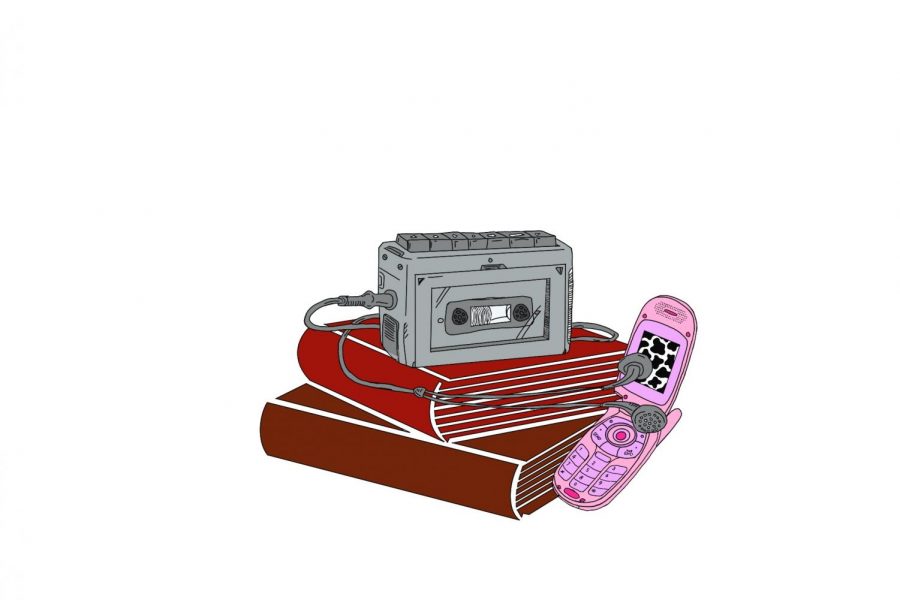Why early 2000’s TV shows are better
Oct 23, 2020
Back when there was scarce social media, no smartphones, and no quick answer through a google search, TV shows in America were, in my opinion, thriving. The overlying theme that many pop culture TV shows from the late ‘90s and early 2000s was based around high school or the early years of college. I’ve noticed that I often crave TV shows from that time, as I find it interesting to observe the cultural environment and social differences presented in the shows.
Of course, these are just TV shows with unrealistic storylines and actors who are obviously at least ten years older than the characters they are playing. Still, when I compare Gilmore Girls (2005), Dawson’s Creek (1998), One Tree Hill (2002), or Felicity (1998) to shows from today like Riverdale or Outer Banks, I notice that there is a big intellectual difference. The shows from the 2000s mention and emphasize books and politics, rather than pop culture and entertainment. The characters are a bit more realistic in terms of what a teenager goes through. Of course, there are unrealistic storylines that are created to make it more entertaining and dramatic, but there is still the underlying hint of adolescence.
Gilmore Girls has the most realistic depiction of high school. Students are stressed about logical topics; homework, tests, college, and grades as well as relationships. While a show such as One Tree Hill focuses more on the romantic dramas within high school friend groups and rarely mentions the fact that college applications and studying tend to take up a lot of time in the average teenager’s life.
Gilmore Girls, Felicity, and One Tree Hill all bring nostalgia and conversation to the screen. It was a time of using a flip phone and sending letters. When, if you really wanted to get hold of someone, you would ring their doorbell rather than facetime or check their location on snap maps. To me, watching these shows offers an escape into a slower-paced and level headed time. Nowadays everything can be solved and answered within minutes, which I’ll admit is a tool I use often and definitely enjoy. But sometimes it’s nice to see characters rushing to the library to read a book and find their answer that way.
The conversations between characters are not only more intellectual than many TV shows from modern times, but also more flirtatious. Relationships aren’t relying on social media, both in a romantic sense as well platonically. The characters deal with boredom differently than teenagers do today. They read books, talk about music and go for a walk, rather than resorting to their phones and social media for entertainment. Gilmore Girls explores social tensions and family drama in a much more realistic sense than a show like Riverdale. There are no secret murderers in the family, but rather complex issues that are discussed in social situations. Issues such as family dynamics, love affairs, and work-ambitions rather than kidnappings and towns that turn supernatural.
Felicity has always drawn me in because it’s set at NYU in the late ‘90s and early 2000s. I’m sure it is one of the reasons why I find New York to be one of my favorite places in the world. Fashion, politics, and social interactions all seem so different back then. I wasn’t alive yet, however, because I’ve grown up watching movies and tv shows from this time period, I feel like I belong there, in a time where people read the paper and discussed politics and art. For this reason, these shows feel the most relatable to me. There is much more than just high school, a show like The West Wing offers a different and more adult perspective on political debacles and social dilemmas. If you are trying to decide what to watch I highly recommend watching early 2000s TV shows. Many of them are modern enough to relate to, however, they feel nostalgic and comforting at the same time.





Roxi ♦ Nov 29, 2020 at 9:35 am
You know, I have this exact sentiment. That’s how I stumbled on your article. To me, the 90s and 2000s were much more about connection and way smarter than todays conversations between characters. I have seen both Gilmore Girls and OTH. To be honest OTH dropped in quality towards the end but it’s still a better show than what you get today. If it comes to nostalgia, I absolutely have to mention Third watch (1999-2005). Its a show about cops, firefighters and paramedics and its about their lives and their jobs, its much more realistic than Chicago Fire / Med / PD – the show creator, Dick Wolf has no idea what opportunities he’s missing and he makes these vanilla shows where everyone is perfect. There is no need for character development because everyone is already perfect.
Another great show from the 2000s era is The Shield. This is about dirty cops but really realistic, their offices look damp and old, not the perfectly clean offices with the latest technology. Anyway, too bad for these new tv shows, they are all entertainment without substance.